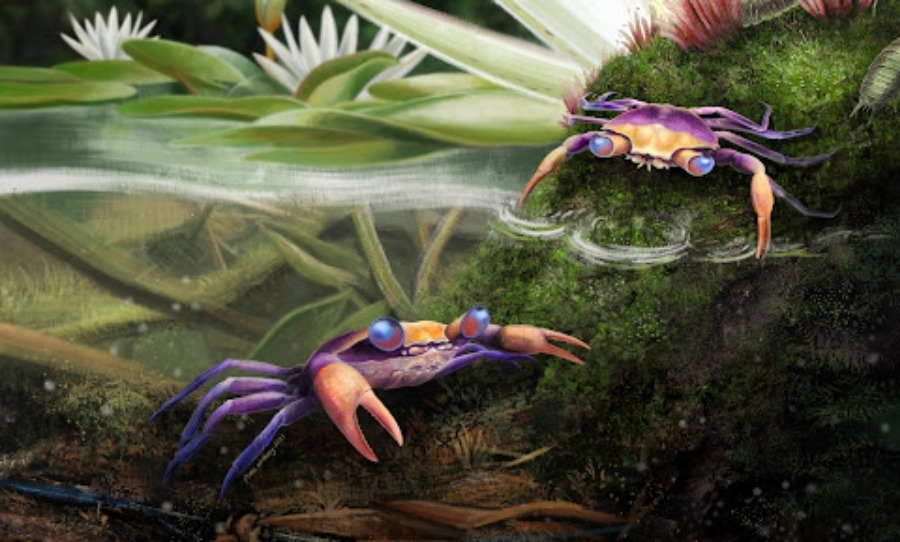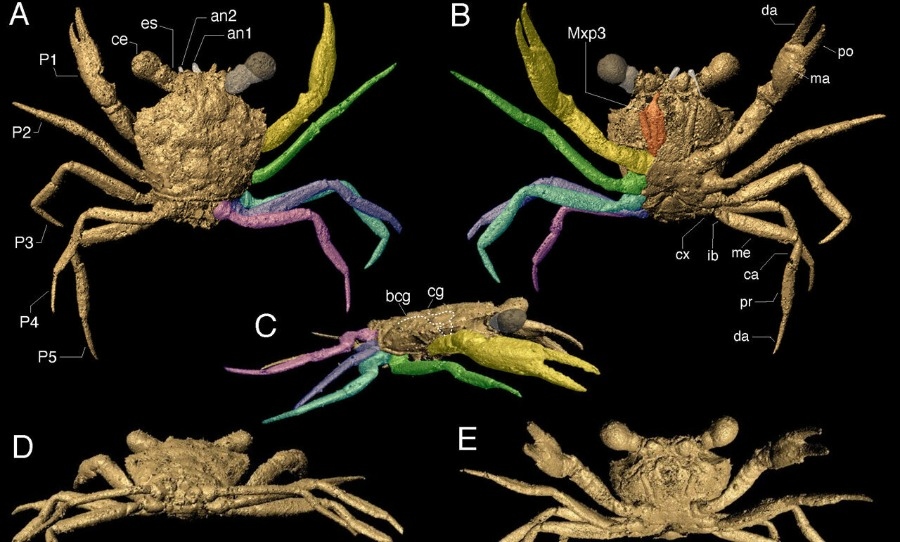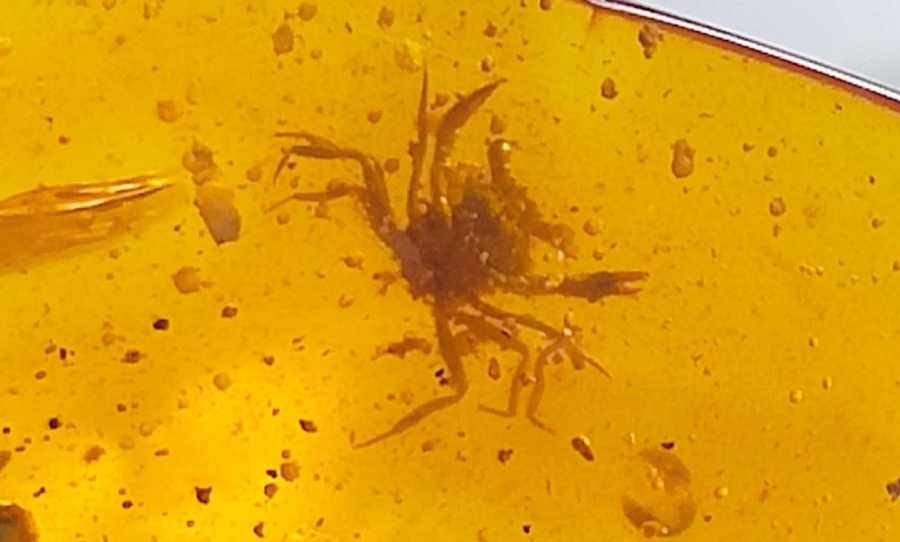Researchers from China, the US, and Canada have discovered the first crab from the Cretaceous period preserved in a piece of amber.
Details of the exciting discovery were published in Science Advances – a science journal. Micro-CT was used to examine the ancient crab and study its body.
According to Micro Photonics Inc, micro-CT is a type of “3D imaging technique” that uses X-rays to slice the object being examined into layers. From this, researchers can effectively see inside the object to help create a 3D image (similar to a CAT scan).

The crab was named Cretapsara athanata. Cretapsara is a reference to two things; the Cretaceous period and “Apsara, a spirit of the clouds and waters in South and Southeast Asian mythology”. Athanatos (Greek for “immortal”) was chosen to reflect the crab’s “preservation in amber”.
The find is significant not only because Cretapsara athanata is “the oldest modern-looking crab” discovered thus far (researchers believe it to be around 100 million years old), but it’s also “the most complete fossil crab ever discovered”.
Very cool crab 🦀 and thank you for sharing about these issues.
— Zélie (@zeliecomics) October 21, 2021
“The specimen is spectacular, it is one of a kind. It’s absolutely complete and is not missing a single hair on the body, which is remarkable,” said the article’s lead author, Javier Luque from the Department of Organismic and Evolutionary Biology at Harvard University in a press release.
Discovered in northern Myanmar, scans of the creature’s body discovered that it had features such as gills, hairs, and antennae. No “lung-like tissue” was discovered in the creature’s gills, helping to identify it as being much older than its modern relatives.
Cretapsara (~100 Mya) bridges the gap between the molecular🧬 split of nonmarine crabs from their marine kins (~130 Mya) and their oldest known fossils (~75–50 Mya), and tells us that crabs have conquered land and freshwater more than 12 times independently! #Evolution #OA 7/n pic.twitter.com/Gm41gnUkcL
— Javier Luque (@JaviPaleobio) October 20, 2021
Due to its size (5mm in length), researchers believe the crab to be a baby. The article (as detailed by CNN) proposes that the crab’s species was not strictly a marine animal, rather it lived a semiaquatic lifestyle in pools of brackish or fresh water on the forest floor. At the same time, the research team hypothesised it could also have been migrating onto land, similar to the modern-day Christmas Island crab.
“Now we were dealing with an animal that is likely not marine, but also not fully terrestrial,” Luque said.
If this were to be true, researchers believe Cretapsara athanata can rewrite the fossil record.

“In the fossil record, non-marine crabs evolved 50 million years ago, but this animal is twice that age,” Luque said.
This means that the crab can be used as evidence to prove that crabs evolved from marine animals to land dwelling creatures during “the dinosaur era, not during the mammal era, as previously thought”.
Cretapsara anthanata’s discovery is also another addition to the Cretaceous Crab Revolution – an event where “crabs … diversified worldwide” and evolved their modern features to be able to live on land. The aforementioned specimen becomes the twelfth entry in this evolutionary tally.



